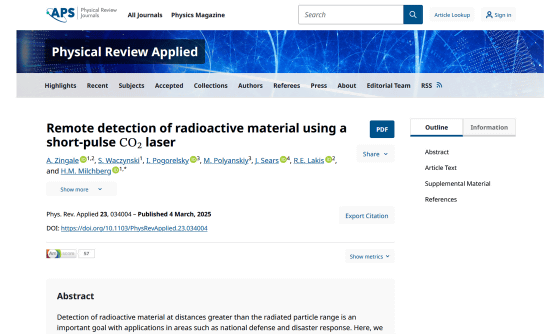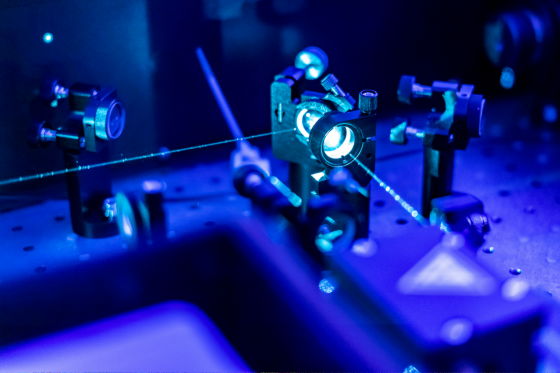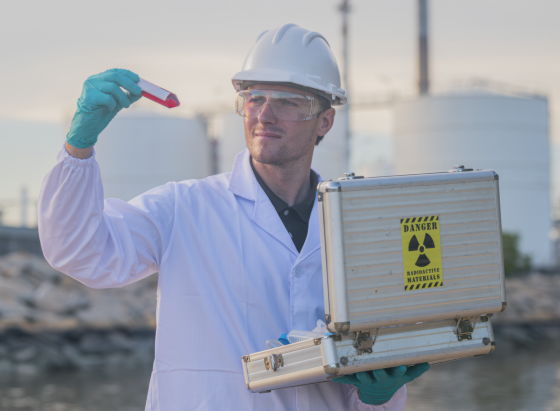Scientists succeed in detecting radioactive material at distances 10 times longer than before using a carbon dioxide laser

Remote detection of radioactive material using a short-pulse laser | Phys. Rev. Applied
https://journals.aps.org/prapplied/abstract/10.1103/PhysRevApplied.23.034004

Laser-based radiation detector allows testing from a safer distance
https://phys.org/news/2025-03-laser-based-detector-safer-distance.html
CO2 laser enables long-range detection of radioactive material – Physics World
https://physicsworld.com/a/co2-laser-enables-long-range-detection-of-radioactive-material/
Nuclear power plants and the manufacture of nuclear weapons require constant monitoring of radiation levels to ensure the safety of workers. However, most radiation measuring equipment only works very close to the source, so by the time radiation is detected, workers are already close to the source and may be exposed to harmful amounts of radiation.
So a research team led by Professor Howard Milchberg of the University of Maryland's Applied Physics Laboratory developed a method to detect radiation from long distances using a CO2 laser, which uses carbon dioxide as a medium to produce high-power pulsed waves.
The team exploited a phenomenon known as ionization , in which radioactive material ionizes the air around it. As the material passes through it, it releases particles that knock electrons out of atoms in the material, creating free electrons and positive ions. These ions are typically only present in low concentrations in air, making them difficult to detect.
The team now demonstrates that shining a CO2 laser at these ions accelerates them and causes them to collide with neutral gas molecules, triggering further ionization, creating a chain reaction of ions and free electrons, creating a tiny plasma .

The research team irradiates the ions generated by radioactive materials with a CO2 laser, causing further ionization, a phenomenon they call 'electron avalanche breakdown.'
The electron avalanche generated by a CO2 laser creates a microplasma that scatters the laser light. By measuring the profile of this
In fact, the research team conducted a radiation detection test using a CO2 laser, using polonium 210 , a type of radioisotope. As a result, they succeeded in detecting radiation from a distance of 10 meters, which is 10 times the distance of 1 meter that was possible with conventional methods using mid-infrared lasers.
'This is kind of a sweet spot,' Milchberg says. The CO2 laser is low enough in energy that it won't ionize material by itself, but strong enough to promote electron avalanche decay.

The team hopes to extend this method further to detect radioactive materials at distances of over 100 meters, but there are obstacles to overcome, such as the shape of the laser and the size of the equipment. They also need to verify whether the method is robust against noise such as aerosols and air turbulence.
Related Posts:
in Science, Posted by log1h_ik







